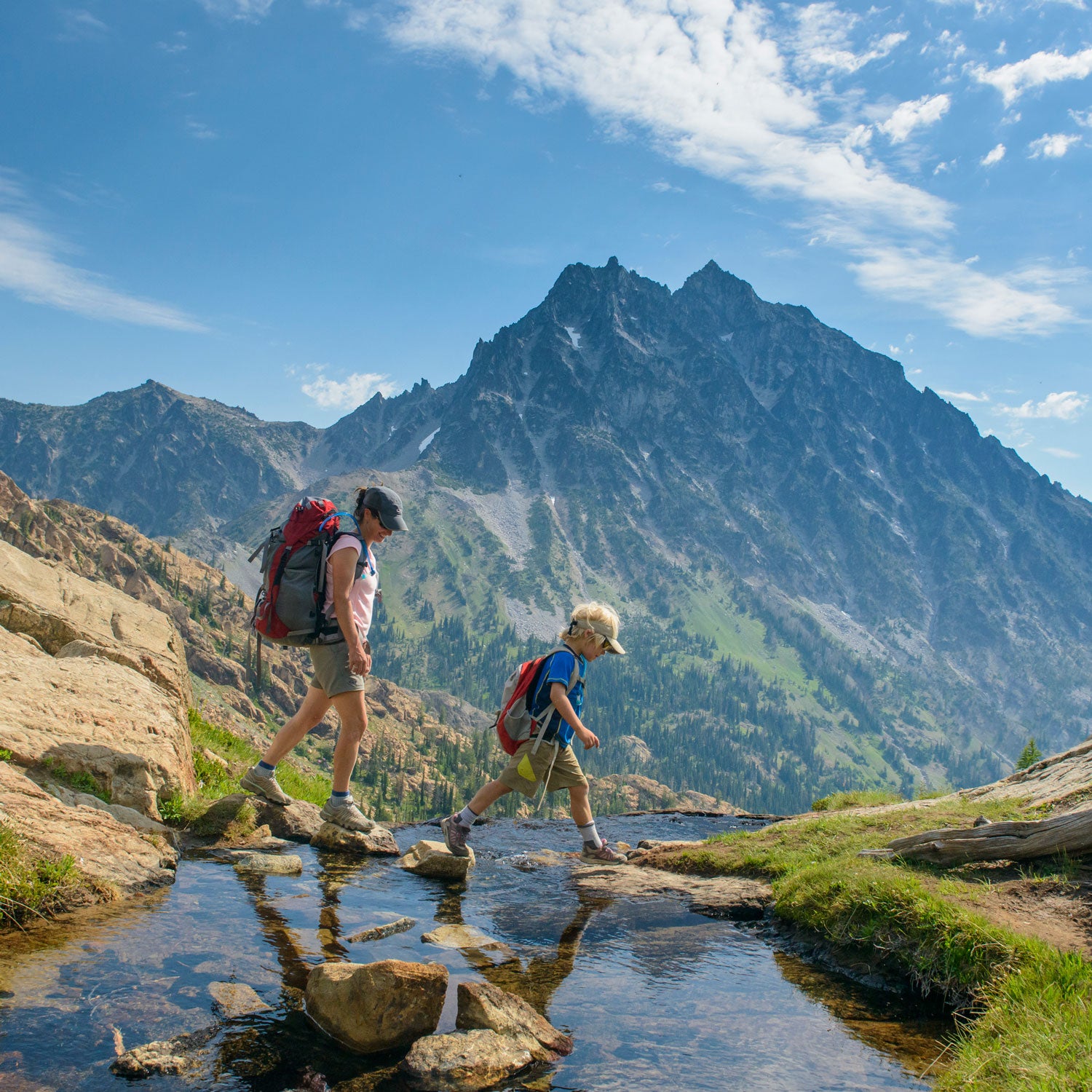Last month, completed a thru-hike of the Appalachian Trail. As far as we can tell, they’re the biggest family group to walk the full 2,190 miles. Although it may seem intimidating to hike through mountains for five months with kids ranging in age from two to 17, Ben Crawford, the father, says they were all more than capable of the task.
Crawford, his wife, Kami, and their kids live in Bellevue, Kentucky. They’ve been backpacking as a family for years—although never for a stretch this long—so they mostly knew what to expect when they started their AT hike. Now that they’ve finished, Crawford says any family with the desire and right amount of experience can do the same.
“One of the things we believe in,” Crawford says, “is seeing how far kids can go and supporting them to take another step.”
If you’re looking to take a big family backpacking trip—even if it’s on a much smaller scale—here’s what you need to know from the Crawfords and other families who’ve done it.
Start Slow
“It’s really important that my kids want to be out there—otherwise, we just wouldn’t go,” says Patricia Ellis Herr, author of , the story of how her family tackled all of New Hampshire’s 48 tallest mountains. Ellis Herr and her daughters, Alexandra, 15, and Sage, 13, live in Plymouth, with the White Mountains practically in their backyard. “We started out going a half-mile to a waterfall, something small,” she says. “I never tried to make them do something they weren’t comfortable with.”
From those half-mile trips to the waterfall, Ellis Herr’s family has come a long way. Over the past few years, they’ve thru-hiked the 211-mile John Muir Trail, Spain’s Camino de Santiago, and last month they completed England’s 191-mile Coast to Coast Trail. She recommends starting out with a day hike of no more than a couple of miles. Then, you can slowly ramp up to include overnights and short backpacking trips. Ellis Herr says that by starting slow, you can figure out if hiking is something your kids are into. “It needs to be their thing,” she says.
Share Gear and Tasks
When it comes to carrying gear, Ellis Herr always leans on the conservative side. She says to never let kids lug more than 10 percent of their body weight—though once they’re teens, they can haul a bit more. For young kids, anything heavier than that could cause lower-back pain. “I carried almost all of it” when they were really young, she says, so be prepared for some extra weight in your own pack.
The Crawfords similarly devised a system to ensure everyone carried enough gear on their AT hike—but not too much—and assigned tasks based on what they had in their backpacks. Dove, 17, carried food and handled dinner each night, while Seven, 13, hauled the camera equipment they used to document their trip and helped with video editing. Eden, 15, carried lunch supplies and helped prepare it when the time came. Memory, 11, did the same for breakfast. Seven-year-old Filia packed out the trash. And two-year-old Rainier sat in a child carrier.
Make It Fun and Educational
Damien Tougas, his wife, Renee, and their three kids came south in 2014 from their home in Montreal, Canada, to thru-hike the AT. What he soon learned about hiking with kids is that you can’t expect them to walk for miles on end without getting bored. His family found that audiobooks broke the monotony of hiking for days. “At some points, we had other hikers join in a row to listen,” Damien says.
While shorter thru-hikes can be done on summer vacation, longer trips mean homeschooling or taking some time off. The Tougas family was already homeschooling and found that the AT provided all sorts of education their kids couldn’t get in a classroom. “My son has always loved animals,” Damien says. “On the trail, he discovered new wildlife, like salamanders, newts, and things. We even met a group of biologists studying salamanders and stopped to talk with them. It wasn’t premeditated, but just another opportunity along the way to learn.”
Talk About What You Didn’t Like
Clear communication is vital to keeping kids happy. For Crawford and his family, that meant daily family talks. “We would discuss our highs and lows at night,” he says. “In the mornings, we would discuss our goals for the day and week.”
Tougas realized his three children all adjusted to the trail in different ways. For example, his oldest daughter, Celine, wanted more privacy, so she got her own tent.
“It was very rare when everyone was firing on all cylinders,” he says. “So there were times we would take a day off and go stay in a hotel, try to find someplace with a pool. I always wanted to hear what they had to say and encourage them and talk things through.”


